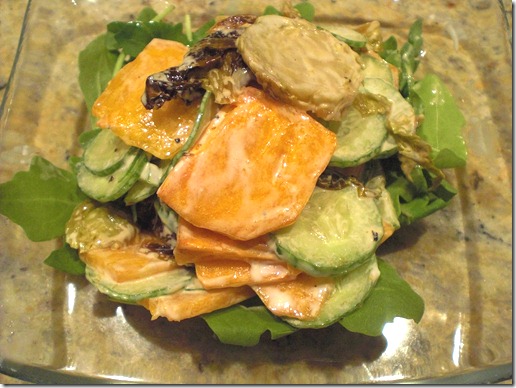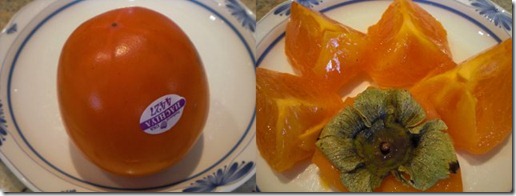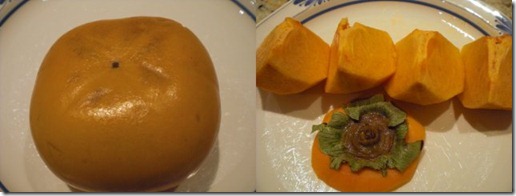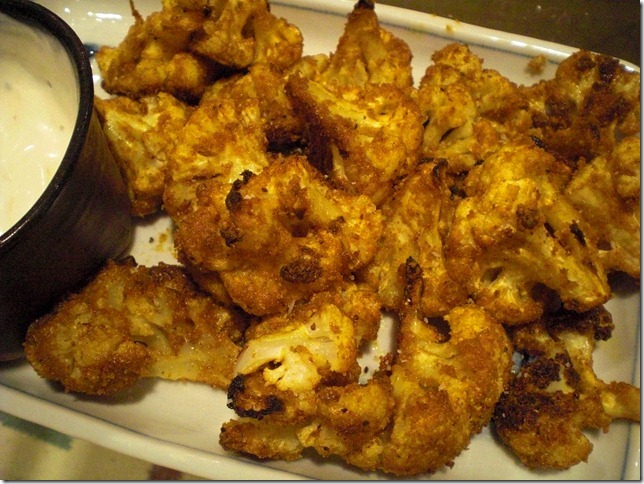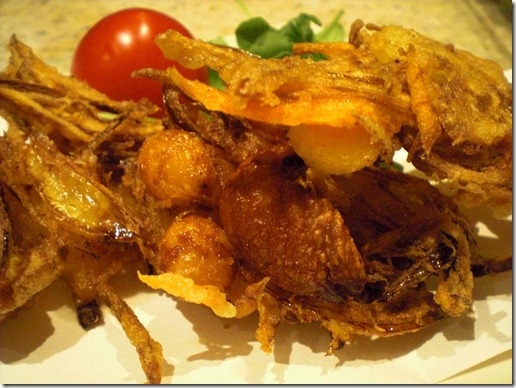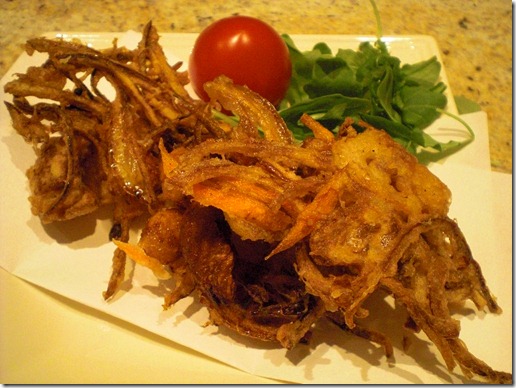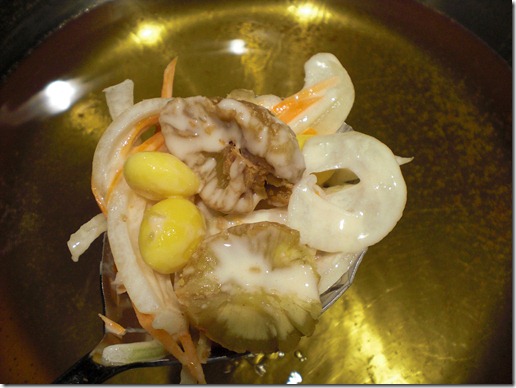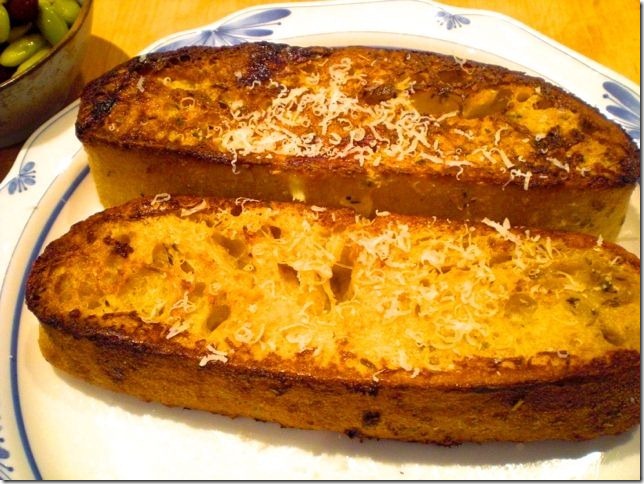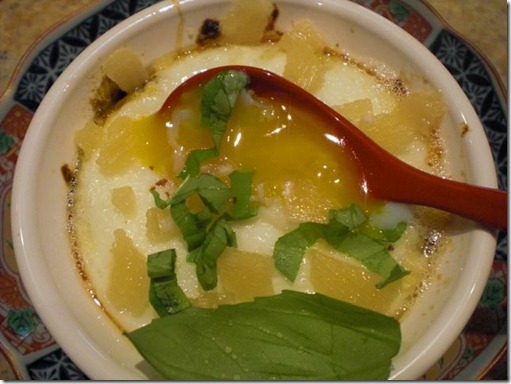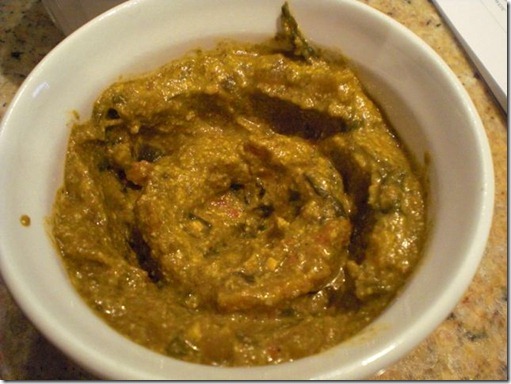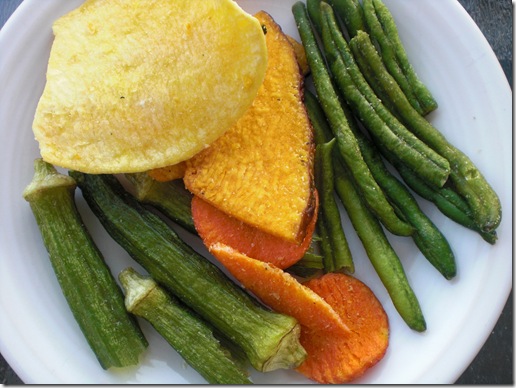The quality of tofu we can buy in the U.S. is variable. Some of the soft tofu
(Japanese brand) we can get at the Japanese grocery store is not bad at all. Our surrogate Izakaya
“Tako Grill” makes a excellent “sukui-dofu” or un-pressed tofu. But I am not satisfied with “momen-dofu” 木綿豆腐 or firm tofu, either from the regular grocery store or from the Japanese grocery store. For this reason, I wanted to make tofu at home but the amount of effort and time made me hesitate to undertake this project.
Recently, while I was browsing through the new cook book called
“Japanese farm food” by Nancy Singleton Hachisu, I came across a recipe for home-made tofu and it rekindled my interest in making tofu. Since this book had a list of Japanese food/cooking tool suppliers, I promptly ordered
the tofu press box and nigari にがり coagulant (magnesium chloride). Then, I procrastinated for some time.
Finally I made my first attempt which was a qualified success
Here is my very first home made tofu served as “
hiya-yakko” 冷や奴.
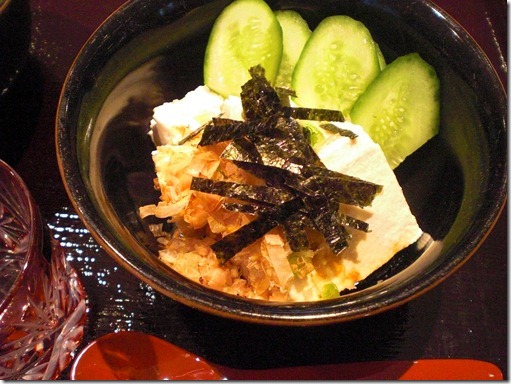
Soy milk: Almost all recipes I can find start from scratch, i.e., making soy milk from dried soy beans. As a matter of fact, the place I ordered my tofu box mainly sells an automated soy milk maker. Before embarking on making soy milk myself, I decided to use store-bought organic unflavored non-sweetened soy milk. I could not find any specific recipes if store-bought soy milk can be used in tofu making. So nothing to loose, I decided to try it on my own. I used half a gallon (2 quarts or nearly 1.9L) as you can see below (#5).
I heated up the soy milk to 180F stirring occasionally to prevent scorching (I measured the temperature using an instant read digital thermometer). As soon as the temp has reached, I cut off the flame #1).
Coagulant: I dissolved 1 tsp of nigari (magnesium chloride) in 1 cup of warm water and stirred it into the soy milk. Since I stirred several times, it made a very fine curd. This is the area I have to experiment with and improve further.
Tofu box: The tofu box has a removable bottom with slots and the box has several side weeping holes. I set the bottom and side and lined the box with the cloth that came with it. The entire box was set up in a square metal basket which spanned the edges of the sink (so that there would be no chance of back wash). After 10 minutes or so when the curds were fully developed, I poured the curds and whey into the box (#2). I skimmed off any bubbles that formed on the surface.
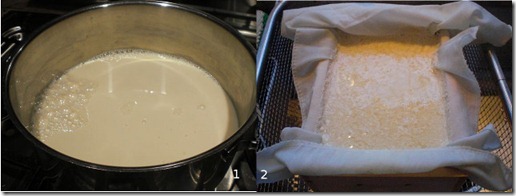
As the excess whey dripped down and the level was 1/2 inch below the edge, I folded the excess cloth over the curd (#3). I then placed the top plate (#4).
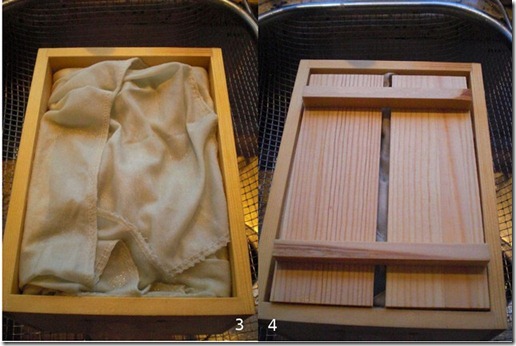
As a weight, I used the empty carton of soy milk (#5) filled with water and placed in the center of the top plate (#6).
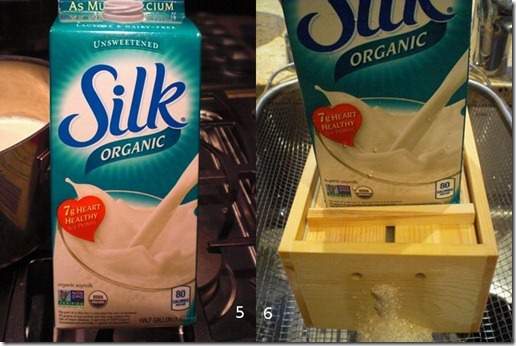
I left the weight for 30-40 minutes. I slipped the still-cloth-wrapped tofu into water (I used our reverse-osmosis filtered water) and unwrapped it under water(below, after I cut it into two). It is not as firm or as solid as I wished but it held its shape.
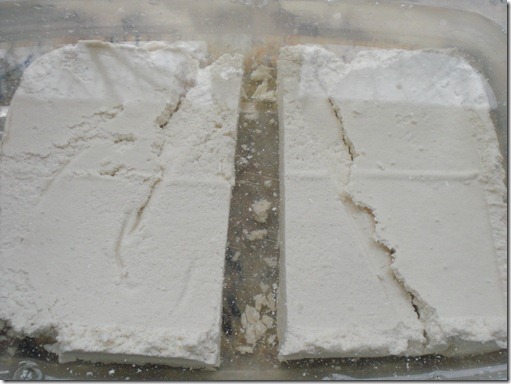
I cut the tofu into smaller blocks under water and served it as you see in the first picture with a garish of chopped scallion, bonito flakes, and thin strips of nori sea weed. I added a small dab of real wasabi and poured undiluted kelp dashi noodle sauce (2x concentrated from the bottle).
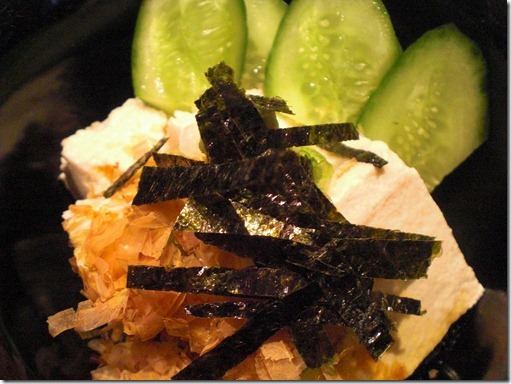
The taste was pretty good—the slightly peanut taste of a legume. It was not as silky in texture as commercial silken tofu but not as grainy or firm as firm tofu. It did not have any off smell/taste which are common among US-made tofu. It could have stronger soybean flavor but this is quite good for my first attempt especially from store bought soy milk.
I read later that, to make a good tofu, soy milk needs to have higher protein than one in the store-bought one (I assume 3-4% but I am not sure this is correct). It is certain, however, that tofu can be made from store bought soy milk. I may try some more times with store bought soy milk (I have some idea of increasing the protein content) before venturing into making my own soy milk.



















